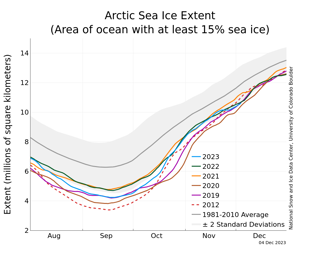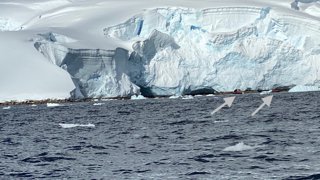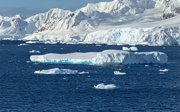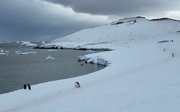
We’ve Lost Five Times the British Isles worth of Ice from Antarctica
Scientists are trying to unravel the cause of the shrinking sea-ice, or ice that floats, on the surface of Antarctica’s Oceans. Currently its much lower than has previously been measured as a September ‘average’. In fact the area of ice that is missing is about five times the size of the British Isles.
I can’t imagine how you go about measuring the sea-ice around Antarctica, but whatever way you look at it, that’s a lot of missing ice!
The National Snow and Ice Data Center have the task of measuring the sea-ice and they seem to have handily been doing this since 1979, using radar instruments. Which means that we have data to compare the sea-ice loss each year – and it seems, according to this diagram, that this year there is a big decrease.

Currently this research is being carried out from the scientific base Rothera but it’s difficult work. Antarctica is a challenging but incredible place to visit during its summer months, as I experienced on my trip there in November 2019, but working there through the winter must be a very rewarding experience but also one that presents those scientists with unique set of problems that tests their endurance and limits.
Antarctica is VAST – like I could never have imagined until I visited.
In this picture below, you can see two Zodiacs with passengers from my ship – if you look closely their red jackets are just about visible. The arrows will help! Visiting ships use Zodiacs or small, agile rubber boats with outboard motors, for exploring off the ship and landings. Each one takes about 8 or 10 passengers and the driver. The ice shelves are many metres high and reminded us of how small and somehow insignificant we are and how vast and uniquely inspiring Antarctica can be.

Imagine working in an extreme cold, isolated place with powerful winds, unpredictable weather and now added risks of the thin ice this year breaking off with the scientists on it! It’s not for the feint hearted but a worthy role for those defiant enough not to let anything stop them contributing.
Interesting word DEFIANT and in this case it’s the name of the International Research project ‘Drivers and Effects of Fluctuations in the sea Ice in the ANTarctic’ spearheaded by the British Antarctic Survey. Can you imagine what it must be like to be contributing to this research, working not only with many other UK Institutes but also those from Australia, Canada, Germany, India, Norway, Spain, USA and the European Space Agency? Such collaborations must be inspiring, and they make me wish that I had studied science in more depth when I had chance to and perhaps pursued a career in this field. My love of Penguins and this remote area, came to me later in life – still, there is time! You can read more about this research, the people involved, the latest news and blogs HERE and the project runs until 2025.
The recent BBC article in the news HERE reports the full story but I pulled out some key facts.
There are a number of factors that have caused the low sea-ice this year, and the full picture is still being worked on, but for now, what do we know?
Let’s not forget though that we don’t have long records of this area going back into history to consult – because it is such a remote region, we have only been studying it for 40 – 50 years. The more people that become interested in the Antarctic and in the future, get involved in science programs where statistics are monitored and recorded there's more chance of getting evidence to support the changes that are happening and therefore influence global powers to make changes.
- Many high temperature records have been broken this year, both ocean temperatures as well as land/country temperatures.
- There have been significant changes to the winds in Antarctica and to the ocean currents
- We know we are at the start of an El Nino and that might be a contributing factor.
- Sea-ice had been growing up until Antarctica’s winter of 2016 but there was a significant change March 2022 – though only in the East area. The normal temperature at this time of the year would be approx. -50c but it warmed to -10c only
- We know that as the ice melts and exposes the ocean in this area, it means that the sunlight is likely to be absorbed rather than reflected, which adds heat to the water and of course…. melts more ice. And adds more heat to the planet.
While on my trip I discovered Citizen Science programmes – never knew they existed. We contributed to them whilst onboard.
Copyright 2023: Sue Quelch. www.sueqsworld.com. September 2023.
File nameFiles
File type
Size
Download



